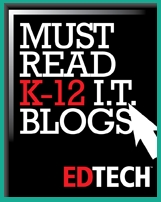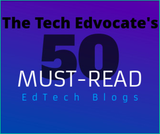
Technology’s constant innovations and increased accessibility have dramatically altered every aspect of the classroom.
Although individual advancements like eBooks, iPads and Smartboards deserve mentions, they are merely a few of the tools used to bring about ongoing change. To gain insight into modern-day learning, take a look at these six ways that technology has changed how we teach:
One of the biggest, most obvious changes technology has brought to teaching is the disappearance of the classroom. Although cyber schools have not completely replaced traditional brick-and-mortar institutions, there has been a dramatic rise in K-12 cyber schools and online degree programs since the mid-to-late 90s.
Some teachers may never see their students in person, interacting instead via video chats, emails and class message boards. Instead of teaching in real time, some teachers now record and post video lectures.
There are pros and cons to every type of classroom, digital or otherwise. A teacher in cyberspace may have different constraints, but — as more and more tech develops — they have unparalleled possibilities for instructional ingenuity.
2 | Online Accountability
Programs like Blackboard allow teachers to post grades and assignments online, allowing students and parents alike constant access to students’ progress or problem areas. Parents can view assignments, email teachers and help hold their children accountable for their work.
Students also have less excuses for not knowing about assignments, due dates, etc. Lost rubrics can be downloaded. Assignments can be turned in digitally, and questions can be emailed to teachers. Programs can also allow teachers to easily check students’ work for plagiarism, thus providing greater means of accountability.
3 | Questioning Reliability
The ease of access to Internet resources requires students to learn to question the reliability of their sources in ways previous generations never did. Students had little reason to question the credibility or bias of books or journals found in their school library.
Students today must not only sift through the vast resources of the Internet for relevant information, but they must also determine whether that information is credible and reliable.
4 | Accommodating Physical Needs
Students with hearing, visual or physical impairments that would have once required a personal aid are now able to function more autonomously thanks to text-to-speech and speech-to-text programs. These programs can now provide class notes, help students read course material or dictate papers and other assignments.
Students with physical handicaps or medical issues that may make it difficult to travel or require extended absences also have the option of cyber school. Students can now watch the lessons they missed and catch up with assignments online thanks to eBooks and other digitized resources.
5 | Multimedia Experience
Progressive teachers constantly find new ways to engage students thanks to technological innovations. Gone are the days of poster board projects.
Students are now using tablets and smartphones to record science fair experiments and Shakespeare projects. They are learning to use editing software and code their own websites. Blogs are replacing journals in English class, and students can use Google Earth to recreate famous battle and travel routes.
6 | Expanding the Classroom
Current digital curriculum and tech funding is close to $12 billion and will likely increase over the coming years. As funding increases and tech grows, classes will continue to expand beyond their physical limits.
Resources like Khan Academy and TED Talks provide access to engaging videos and guest lecturers that eclipse the capabilities of schools’ physical media library. Some means of digital field trips already exist, but soon students will be able to visit archaeological sites, research centers, historical monuments, art museums, battlegrounds and other destinations via video or interactive websites.
Of course, we can only guess what the future will hold. The classroom of 2035 will likely be as unrecognizable to us as today’s classroom would be to 1995.
Anum Yoon is an ESL teacher who works in Philadelphia. She is also the founder and editor of the personal finance blog, Current on Currency. You can catch her updates on Twitter @anumyoon!












